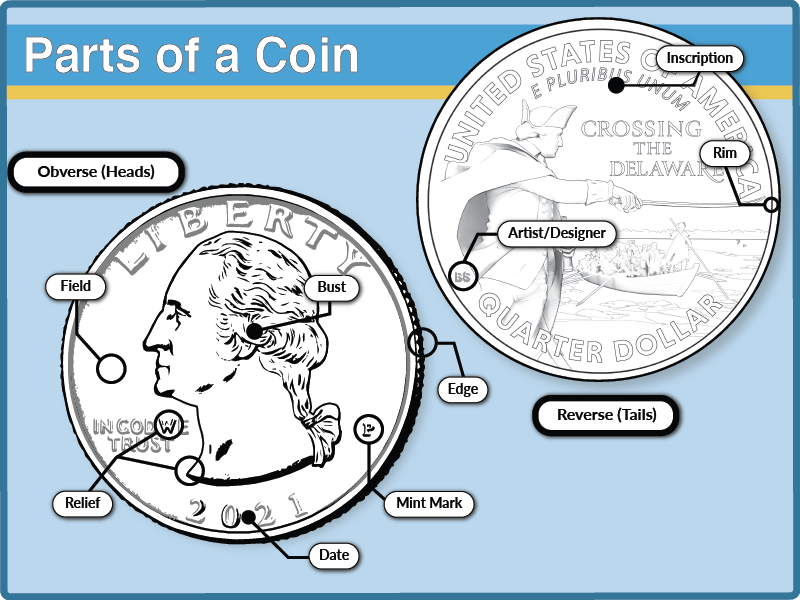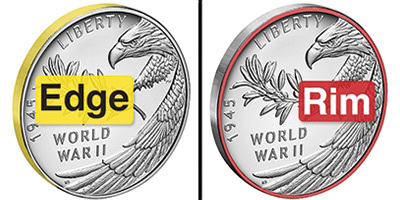Coin designs take into account all the parts of a coin. We use special terms to describe these parts.

- Obverse (heads) is the front of the coin and the reverse (tails) is the back.
- Edge is the outer surface, which can have lettering, reeding, or be plain.
- Near the edge is the raised area called the rim.
- A bust is an image of a person from the neck up, like Abraham Lincoln on the penny.
- The field is the blank area of background on a coin.
- Relief means the markings on the coin that are raised above the surface.
- The mint mark is the small letter that shows which Mint location made the coin. The two most common mint marks are the “P” for Philadelphia and “D” for Denver.
- The initials of the artist(s) who designed and sculpted the coin are also included in small letters.
- Other writing on a coin includes the date and inscriptions.
Learn more about how Mint artists design coins.
Grab a coin and follow along…
Use your coin to follow with the explanations below.
Denomination
The denomination is the name of the coin, like penny, nickel, dime, and quarter. The face value is how much money it’s worth. The penny is worth one cent.
The government decides each coin’s value and everyone agrees to honor it. That’s why a store can’t refuse if you try to pay for a sandwich in pennies!
Edge vs. Rim
The edge of the coin goes around the outside. The rim is the border around each side of the coin. It is raised, which protects the design and allows coins to stack on top of each other.

The edge can be plain, reeded, lettered, or decorated. Run your finger around the outside of your coin. Does the edge feel smooth or rough? Pennies and nickels have plain edges, which are smooth. Dimes and quarters are reeded with little lines all around the edge. Some collectible coins even have words around the edge, called a lettered edge.

